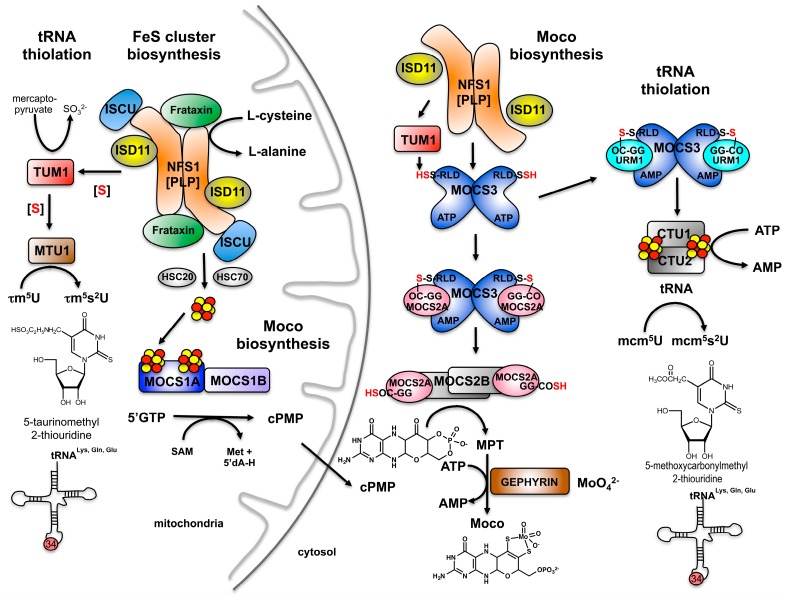Figure 4.
Localization of Moco biosynthesis, FeS cluster biosynthesis and tRNA thiolation in humans. Shown is a scheme of the biosynthetic pathway for Moco biosynthesis, FeS cluster biosynthesis and tRNA thiolation in humans. For Moco biosynthesis, the conversion of 5′GTP to cPMP catalyzed by MOCS1A and MOCS1B, is localized in the mitochondria. This is also the main compartment for FeS cluster biosynthesis in eukaryotes. Synthesized cPMP is further transferred to the cytosol, where all further modification steps are catalyzed. These steps involve the conversion of cPMP to MPT by MOCS2A/MOCS2B and the sulfur transfer by MOCS3, the insertion of molybdate by gephyrin. The main compartment for FeS cluster biosynthesis is the mitochondrion, where NFS1 forms a complex with ISD11, ISCU and Frataxin. Formed FeS clusters are inserted into acceptor proteins such as MOCS1A. In mitochondria, NFS1 also transfers the sulfur to TUM1, a protein involved in the τm5s2U formation of mitochondrial tRNAs. For TUM1, a dual localization has been revealed. For cytosolic tRNA modification, MOCS3 transfers the sulfur to URM1, which is involved in the formation of mcm5s2U modified nucleosides in tRNA.

